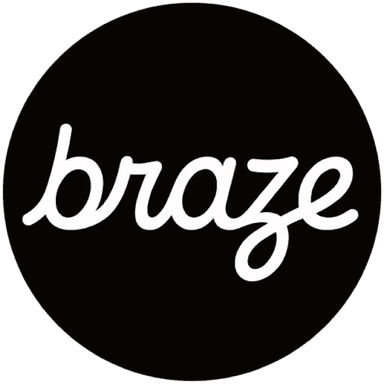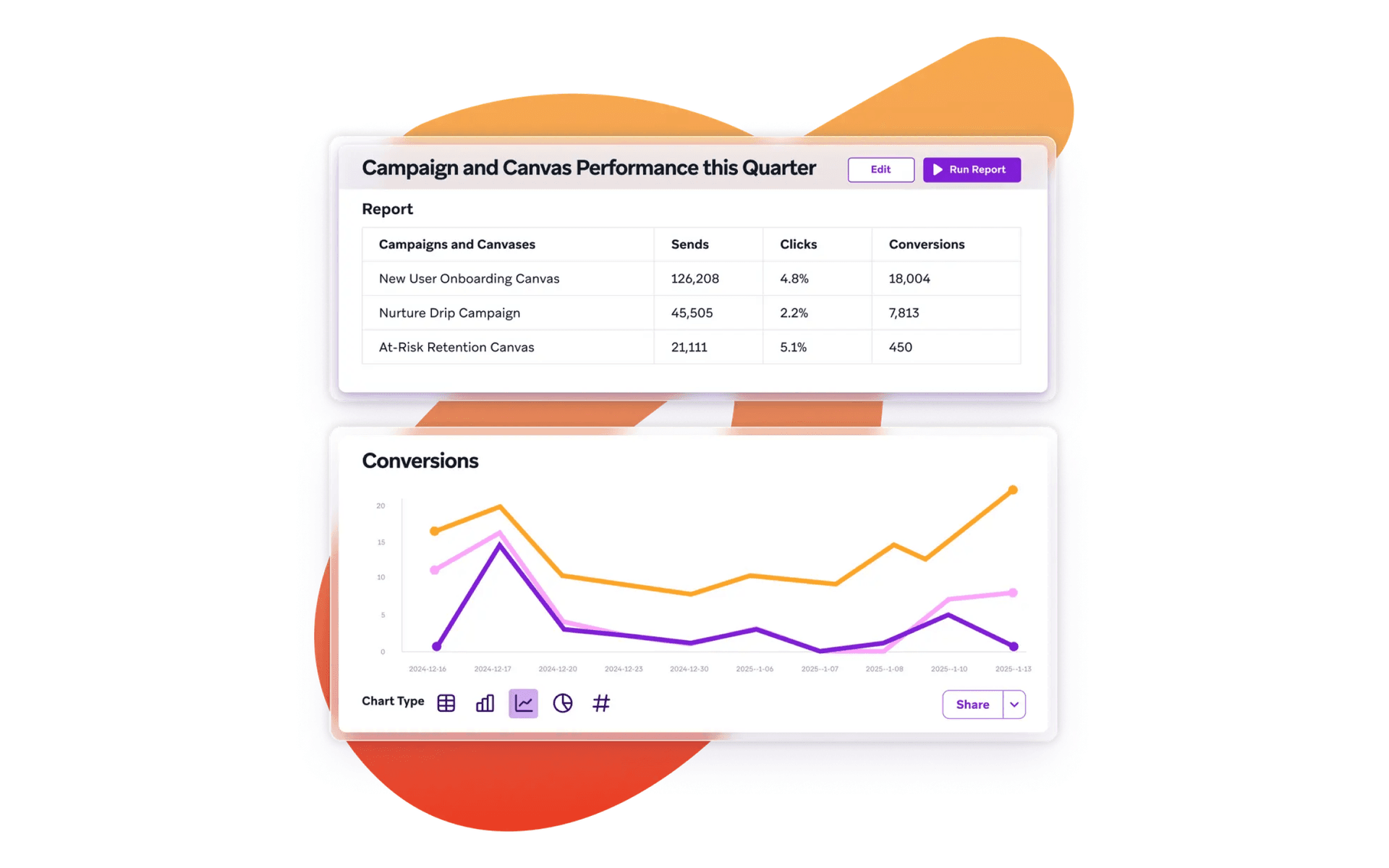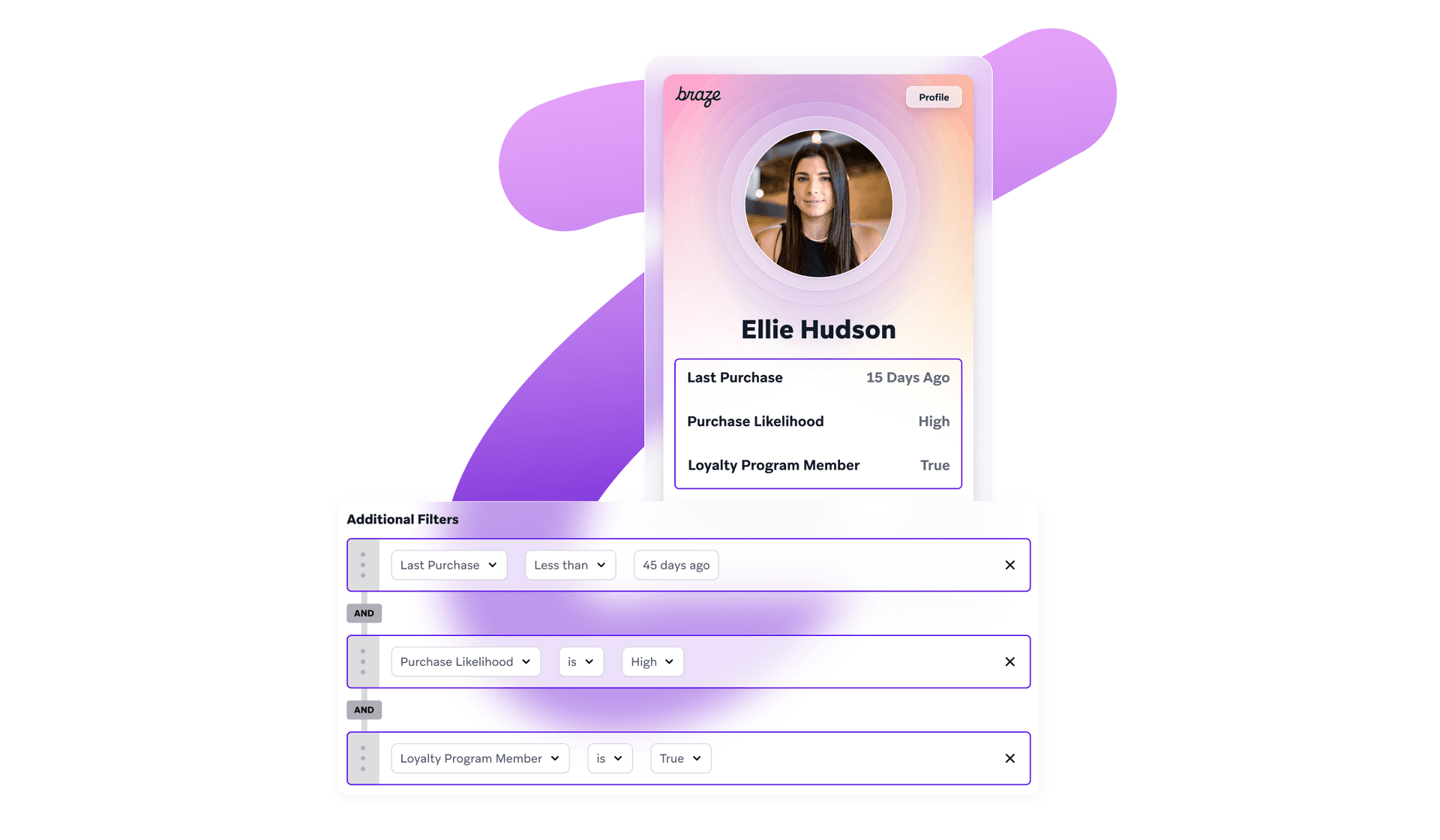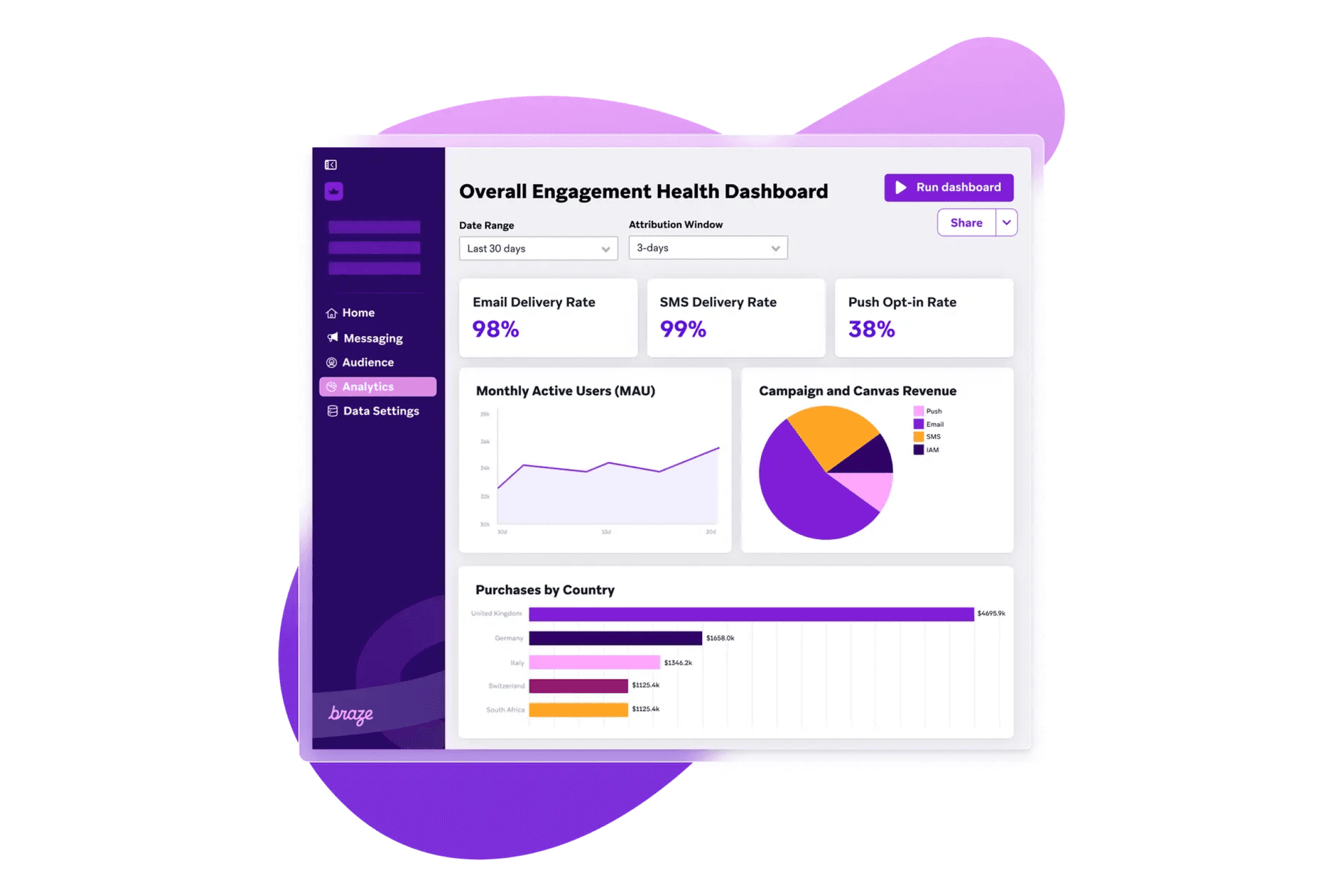Ideas that deliver: Quantifying the competitive advantage of creativity
Published on July 28, 2025/Last edited on July 28, 2025/9 min read


Team Braze
BrazeEvery year at the Cannes Festival, one truth continues to stand out: creativity is essential for business success. For marketing leaders, the challenge is translating bold ideas into actionable strategies that resonate with stakeholders, especially those who clutch their purse strings like a dragon guarding its treasure.
In a world of fleeting consumer attention, the intersection of creativity and data can be daunting. However, demonstrating the ROI of creative initiatives is crucial—not just for business success, but for unlocking the budget needed to support creativity and position the business for prestigious awards like the Cannes Lions.
Measuring the impact of creative initiatives
The first step in connecting creativity to business impact is measurement. Creativity may feel as elusive as trying to catch a butterfly in a breeze, but fear not, it can be quantified.
By leveraging robust analytics tools, marketers can track engagement metrics, conversion rates, and customer feedback in real-time, transforming abstract ideas into tangible results. A mix of qualitative and quantitative metrics is key. While hard numbers like sales figures and conversion rates are essential, behavioral insights such as engagement patterns and customer journey analytics can provide a fuller picture of a campaign's impact.

This dual approach not only satisfies the analytical minds of CFOs but also enriches the narrative around creative initiatives, making them far more compelling when it comes time to submit for awards.
Harnessing technology for creative innovation
Technology is not just a tool; it’s a creative sidekick, and customer engagement platforms like Braze are transforming how marketers can access performance results and fuel idea creation.
AI is at the forefront of this transformation, extending creativity rather than replacing it. AI agents analyze vast amounts of data, identifying specific preferences that human analysis would struggle to at scale. These systems might uncover that your mobile users engage 40% more with carousel ads on weekends, or that customers in specific regions prefer shorter-form content—insights that become the foundation for smarter creative decisions that lead towards specific, achievable goals.
Armed with these insights, marketers can build campaigns that adapt in real-time to what's actually working. Instead of launching one creative and hoping for the best, you can deploy multiple variations while AI identifies which resonates with each individual customer. This means delivering personalized experiences at scale—the right creative format, messaging tone, and timing for each individual, all without guesswork or endless manual testing cycles.

Moving from chaos to clarity on campaign performance
Imagine this: It’s 4:45 pm on a Friday, and you’re asked for an update on the new onboarding campaign. Instead of scrambling through scattered data across multiple platforms, you can swiftly compile insights using unified reporting dashboards that provide a high-level view of campaign performance, audience segmentation, and conversion tracking. This allows practitioners to quickly report on effectiveness while empowering executives with the confidence that their messages are resonating with customers. Real-time insights help to easily identify which creative approaches are working and make nimble course corrections, eliminating the headaches of waiting for IT support and ensuring that your strategy remains aligned with customer expectations.
With Braze, marketers can transform that Friday afternoon tale of woe into a quick and easy win. Powerful native platform features allow you to track performance across campaigns and Canvases in real time, adjust strategies based on actionable insights, and monitor the impact of your changes—all without leaving the Braze platform. Imagine running holiday campaigns across email, push, and SMS, and being able to analyze their performance in one unified view. If push notifications are underperforming, you can pivot your focus to email campaigns and visualize the impact of your changes instantly.
Additionally, OfferFit by Braze further expands personalization in marketing. This technology allows marketers to harness AI decisioning agents to discover and deliver the right message, offer, channel, timing, and more for each individual customer. For instance, a customer who only buys occasional tickets for a sports team might receive a special offer for a single game, while a season-ticket holder could be targeted with exclusive deals for the entire season. Marketers can define a target audience, input the options for message, offer, timing, etc., they would like the agent to personalize, and the OfferFit by Braze AI Decisioning Engine swoops in, autonomously sending 1:1 personalized experiences for each customer.
This capability enables tailored experiences that resonate on a personal level, making it easier to present creative ideas in a way that will resonate with every customer. And by leveraging the reporting layer that OfferFit by Braze provides, marketers can explore customer insights discovered by AI decisioning agents, ultimately quantifying the impact of their creative strategies and showcasing their value to stakeholders.
Empowering non-marketers in the customer engagement mix and streamlining processes
AI not only enhances creativity but also empowers non-creatives within the marketing ecosystem. Operations teams and data analysts can leverage AI tools to faster and more efficiently organize data, build segments, and create reports that serve as the foundation for creativity—also empowering other team members to be able to do the same. This collaboration between creative and technical teams fosters a more integrated approach to marketing, where data-driven insights inform creative decisions.
As AI streamlines processes, marketers can focus on what they do best, crafting compelling narratives and innovative campaigns. With AI handling the heavy lifting of data analysis, marketers can experiment with creative variations that resonate with each individual, ensuring that every message is tailored to meet customer needs. AI can help decide which of these creative approaches will resonate with which customers, at the times and places that matter most.
Communicating the impact of creativity to the C-suite
Once you’ve gathered the data, the next hurdle is communication. It’s not enough to present numbers; you must weave a narrative that captivates your audience. This is where storytelling enters the stage, wearing a cape and ready to save the day.
To effectively communicate the value of creativity, marketers should craft a compelling narrative that connects data to broader business objectives, highlighting how creative initiatives align with brand values, enhance customer experience, and drive loyalty.
Effective marketers create shareable reporting dashboards that update in real-time, demonstrating creativity's impact rather than waiting for quarterly presentations. When you can show a CMO how a bold creative choice increased conversions across email, push, and SMS simultaneously—with visual proof they can explore themselves—the conversation shifts from 'prove it worked' to 'how do we do more of this?

In a world where consumers seek authenticity and connection, telling a resonant story is critical. Brands that tap into emotional drivers will capture attention and foster lasting loyalty—and perhaps even win coveted awards.
The case for creativity
Marketing leaders must champion creativity within their organizations. The language of effectiveness isn’t just about numbers; it’s about the stories behind them. Creativity can ignite engagement, cultivate loyalty, and ultimately catalyze significant business-wide transformations.
As consumers are bombarded with messages, standing out requires audacious ideas and innovative strategies. The future belongs to marketers who can combine creative intuition with granular audience insights. However, 85% of surveyed global marketing executives are concerned their messages aren’t resonating, with 54% feeling very or extremely concerned, and 32% not testing customer engagement efforts due to resource constraints.
Instead of guessing what resonates, use AI decisioning to autonomously experiment at the individual customer level, to find variations that speak to their specific behaviors and preferences. Allow AI to run more tests than humans can feasibly set up, and decide which of your creative approaches resonates with which audiences. This approach transforms creativity from art into science, without losing the magic. By measuring the impact of creative initiatives, communicating their value effectively, and learning from industry best practices, marketers can craft a compelling case for creativity to CFOs, clients, and other key stakeholders.
As the landscape shifts towards omnichannel marketing, marketing leaders must ensure creativity transcends silos and permeates every touchpoint of the customer journey. To enforce consistency in messaging and experience, leaders should establish clear brand guidelines that outline tone, style, and key messaging across all channels. Regular cross-departmental workshops can foster collaboration and alignment, ensuring that all teams embrace the brand vision.
Implementing a customer journey orchestration tool such as Braze Canvas can streamline communication and facilitate easy access to approved assets, reducing discrepancies and building trust in a fragmented market.
Conclusion
Remember that creativity isn’t merely an asset; it’s a catalyst for change. Embrace the wild ideas, quantify their impact, and tell the stories that will resonate with your stakeholders. In the realm of marketing, creativity pays off—both in engagement and in the bottom line. And with the right blend of creativity and AI-driven personalization from platforms like Braze, you might just find yourself clutching that coveted Cannes Lion.
Want to win big next year?
Unlock the secrets to success with our guide, Engagement Illuminated: Data and Reporting Best Practices. This essential resource equips marketing teams with the insights needed to effectively sell their creative ideas to internal stakeholders and award judges alike. By mastering data and reporting, you can enhance campaign outcomes and build stronger customer relationships.
Don’t leave your Cannes Lion aspirations to chance—Download the guide here and elevate your chances of winning big!
Forward-Looking Statements
This blog post contains “forward-looking statements” within the meaning of the “safe harbor” provisions of the Private Securities Litigation Reform Act of 1995, including but not limited to, statements regarding the performance of and expected benefits from Braze and its products and features. These forward-looking statements are based on the current assumptions, expectations and beliefs of Braze, and are subject to substantial risks, uncertainties and changes in circumstances that may cause actual results, performance or achievements to be materially different from any future results, performance or achievements expressed or implied by the forward-looking statements. Further information on potential factors that could affect Braze results are included in the Braze Quarterly Report on Form 10-Q for the fiscal quarter ended April 30, 2025, filed with the U.S. Securities and Exchange Commission on June 6, 2025, and the other public filings of Braze with the U.S. Securities and Exchange Commission. The forward-looking statements included in this blog post represent the views of Braze only as of the date of this blog post, and Braze assumes no obligation, and does not intend to update these forward-looking statements, except as required by law.
Be Absolutely Engaging.™
Sign up for regular updates from Braze.
Related Content
View the Blog
How behavioral marketing turns data into personalized experiences

Team Braze

Enterprise generative AI: Transforming data, decisions, and customer experiences

Team Braze

Omnichannel personalization: Delivering consistent, connected customer experiences
